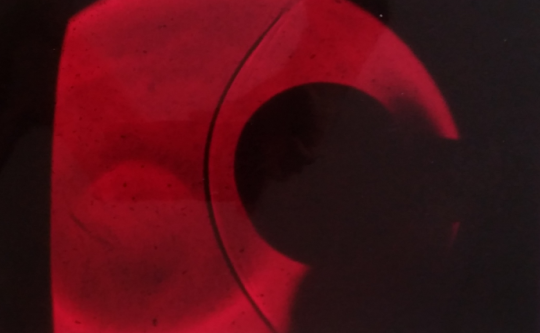projects
I’m delighted to be back at SLB after working for Q.Bio in Redwood City CA for a year.
Schlumberger
For the four years June 2014 to July 2018, I had the pleasure of working for SLB in Houston. I developed a distributed surface microseismic monitoring system, you can read some abbreviated details here. The project involved cloud/HPC computing, digital signal processing, REST connected web services, IoT, embedded devices, wireless/cellular networks and as always, Boost/C++ for the heavy lifting.
Penn State
In my last role before SLB, I worked as a computational scientist with Research Computing at Penn State, engaging in a vibrant mix of math, programming and teaching, with a heavy emphasis on linear algebra, GPUs and accelerators. I developed the HPC Essentials series, seminars designed to quickly get workers up to speed. These seminars cover OpenMP, MPI, CUDA, C++, Unix/C and more, in at least 200 pages or roughly 10 hours of truly devastating detail : HPC V , HPC IV , HPC III , HPC I & II
Condensed Matter

I performed countless DFT-based, ground state electronic structure calculations on a weekly basis for myself and others. DFT has made great strides in the last couple of decades, providing reliable data for a wide variety of material properties. I primarily use Quantum Espresso and most recently I’ve been working on cellulose and oxides, work which is helping inform the construction of material informatics systems for reducing the time to new material discoveries. I also have some interest, although very little experience, in the fractional quantum hall effect (FQHE), through supporting a colleague’s calculations with GPU accelerated routines.
GPU Computing
Much of my time at Penn state was spent with the Nvidia series GPUs, programming in CUDA. I (still) have a particular interest in scaling and accelerating physics and chemistry codes largely through heterogeneous GPU/CPU linear algebra. I have a number of publications now, and various talks at Nividia GTC. Forgive what must sound like a marketing pitch, but GPUs present exciting opportunities to quite literally push the farthest boundaries of science and engineering. ED: 2017 and I have to admit to some regret at not buying Nvidia stock back in the day, what with the current obsession over AI/cryptocurrency mining 🙂
Optical Diagnostics/Honors
I started out as an experimentalist, building optical diagnostics for a shock tunnel, ultimately intended for visualizing flows in devices like scramjets. Essentially life consisted in making pretty pictures including the above, a shock forming on a cylinder, taken with a CCD. Beautiful, ain’t it? Well it would be if I could find the image. Here’s my honors thesis on the subject, completed at UQ sometime in the murky past. I wonder if that scramjet ever did get off the ground. ED: finally found the image!

Relaxor Ferroelectrics/PhD
Somewhere in grad school I began the switch to computation, but not before mastering a couple of complicated (quantum) solid state NMR experiments, including MQMAS/STMAS. I do have an early, happy memory of sitting in the Rocky Mountains SS-NMR conference out in Denver. My wife was enjoying baby sitting the boss(es) daughter, I met my future post doc advisor and Gan received an award for the invention of STMAS. After the conference we went to gorgeous Estes Park and stayed near the shining hotel. Not the uber creepy kubrick version of the shining, the crappy tv movie version. But I digress. I studied Relaxor Ferroelectrics primarily with NMR, accompanied by some calculations. Support was found for a particular chemical model in the materials, I showed from the math a more complicated version of MQMAS to further resolve interactions wasn’t possible etc etc. My thesis at least inspired this pub, and based on the difficulty of characterizing disordered materials has led to an abiding interest in material informatics.
Computer Vision/Image mining
I’ve produced a C++ framework based around boost, traditional and new image analysis algorithms for extracting data from technical images in documents. The software makes use of boost structures and associated algorithms to reconstruct data and build relationships between seemingly disparate pixel information. Overall, this is basically a process of vectorization; taking bitmaps and making text and/or vectors, allowing the data represented in the binary images to be stored and/or reused for further modeling etc. I scored an article in New Scientist once on this topic. I’m currently working to commercialize the technology and have participated in the Ben Franklin techcellerator program at Penn State. ED: we’re finally approaching commercialization, at long last : http://plot2txt.com/
NEMs/MEMs

I’m interested in simulating and designing devices particularly for microfluidic propulsion eg., the figure above; I use techniques including classical MD to perform atomistic simulations. In the example given, arrangements of acoustic fields create driving motion, leading to microfluidic thrust, also by virtue of interactions with boundaries. Someday this device may help cool the CPU you currently dry your socks on, or help deliver therapeutics to cancer cells.
Quantum Computation
I can’t say that I’ve made any real contribution here. I certainly see FQHE as a potential candidate model. And while theoreticians have shown NMR to not have the requisite properties of entanglement and scaling, I was at one time interested in manipulating quadrupolar spins with electric fields. I blogged a little here on creating an experimental setup that allowed one to apply an external EFG and shift spins, something I observed in scandium chloride. If nothing else it provided a neat way to measure Q I guess.